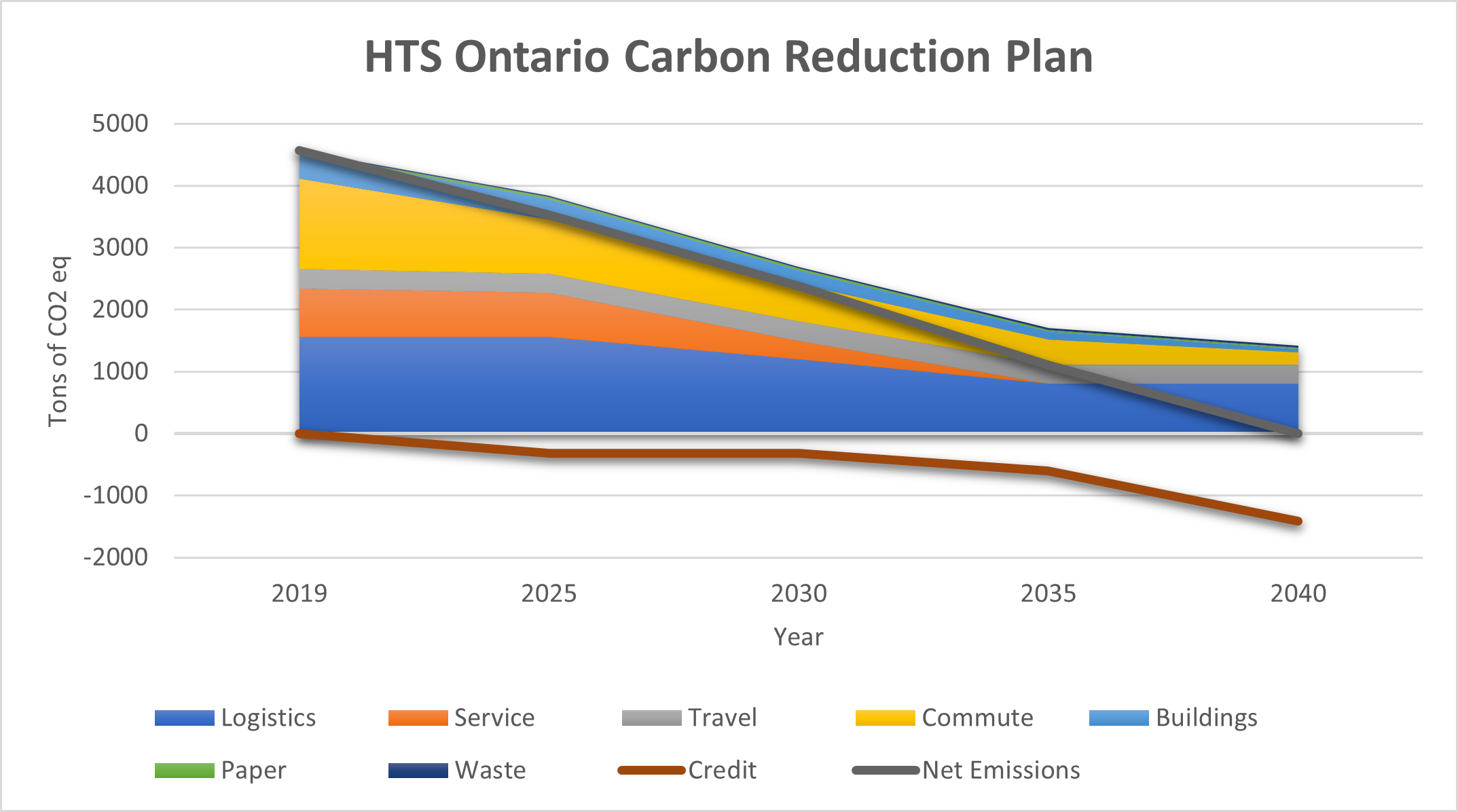
Sustainability Plan: Reach Net Zero by 2040
Our Commitment
HTS recognizes the immense importance of addressing one of the most critical challenges of our time – climate change. HTS Ontario has committed to a reduction plan with steps to reach net zero carbon by 2040.
To track this path to net zero, a baseline measurement of the company’s carbon footprint was prepared by a third-party carbon accounting team. This included a breakdown of the source of the greenhouse gas (GHG) emissions as summarized in the below figure.

The Path Forward
With the majority of HTS’ GHG emissions coming from vehicle usage, either by the service fleet, logistics fleet, or commuting employees, the introduction of electric vehicles (EVs) will be necessary. To begin this transition, the service fleet has begun switching over to hybrid vehicles for end-of-life replacements and, as of January 2023, have started an EV pilot project. The logistics fleet will follow a similar path, the main limitation being product availability. HTS is also adding electric charging stations at its Ontario locations to make EV adoption more feasible.
HTS’ building footprint will be addressed through a couple of avenues. The HTS-owned properties will be upgraded, including renovations to the head office in Toronto with low-carbon equipment – expected completion by 2025. HTS will implement better waste management programs at its facilities to reduce excess waste and improve the management of the waste that cannot be reduced. While there are currently no zero-emission air travel options, HTS is purchasing annual carbon offsets to compensate for emissions.
A dedicated team with members throughout the Ontario offices meets regularly to track the company’s emissions and progress towards the net zero carbon goal by 2040. This includes annual carbon accounting reports from a third-party consultant to track progress toward carbon neutrality.
HTS Ontario looks forward to this journey to net zero carbon and continues to be a leader in the industry.
